When one thinks of castles, one rarely think of California. But believe it or not, there are actually a few absolutely stunning castles that have been built through the years across the Golden State. While there are many more castles to be found in California, the following are 10 castles worth visiting if you have the chance!
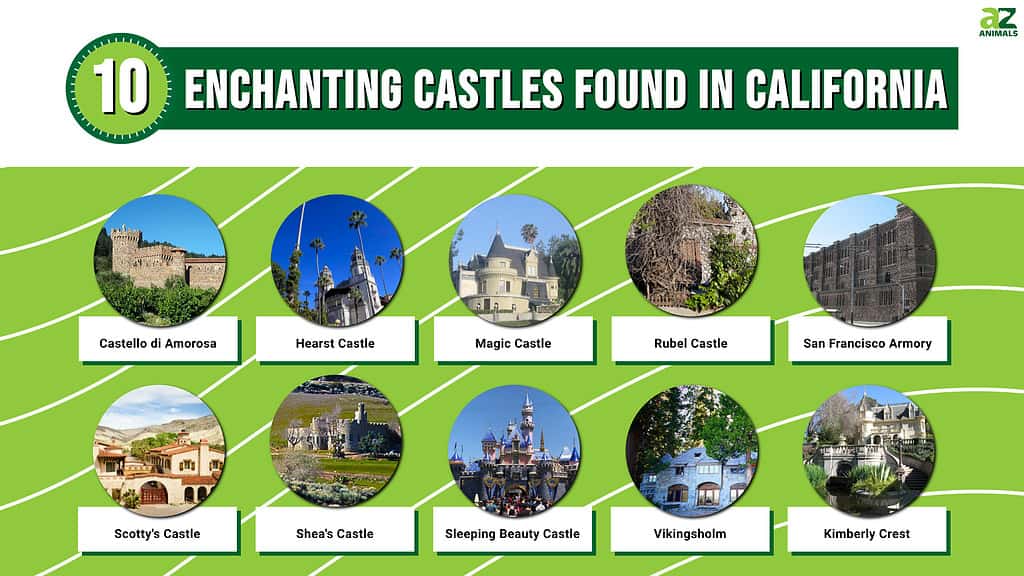
Keep in mind that some of these stunning castles require membership or another type of payment in order to tour their grounds.
1. Castello di Amorosa
The majestic Castello di Amorosa castle in Calistoga, California, has all the allure of medieval Europe. The castle’s construction began in 1994 by Dario Sattui, a fourth-generation winemaker. It took 15 years to complete, although it opened to the public in 2007. In order to provide guests with a genuine and stunning experience, Sattui undertook this enormous project and was inspired by the architectural marvels of Tuscan castles from the 13th century.
Sattui’s enthusiasm for winemaking and the preservation of Italian medieval architecture served as the impetus for building the castle. His family’s winery was to be housed at Castello di Amorosa, which also served as an immersive experience for wine connoisseurs. Every stone in the castle was painstakingly carved by hand using traditional techniques, serving as a tribute to Sattui’s attention to detail.
Castello di Amoros’ architectural design is reminiscent of the genuine Italian medieval fortifications seen in Tuscany. The castle perfectly embodies the period with its five towers, defensive walls, drawbridge, and even a large hall. Inside, there are other chambers to explore, including a church, dungeons, and a tasting area, all of which are furnished and decorated in keeping with the era.
Inviting tourists to travel back in time and taste the rich legacy of medieval Italy while enjoying the greatest wines of the Napa Valley, Castello di Amorosa exists as a singular and charming destination today.
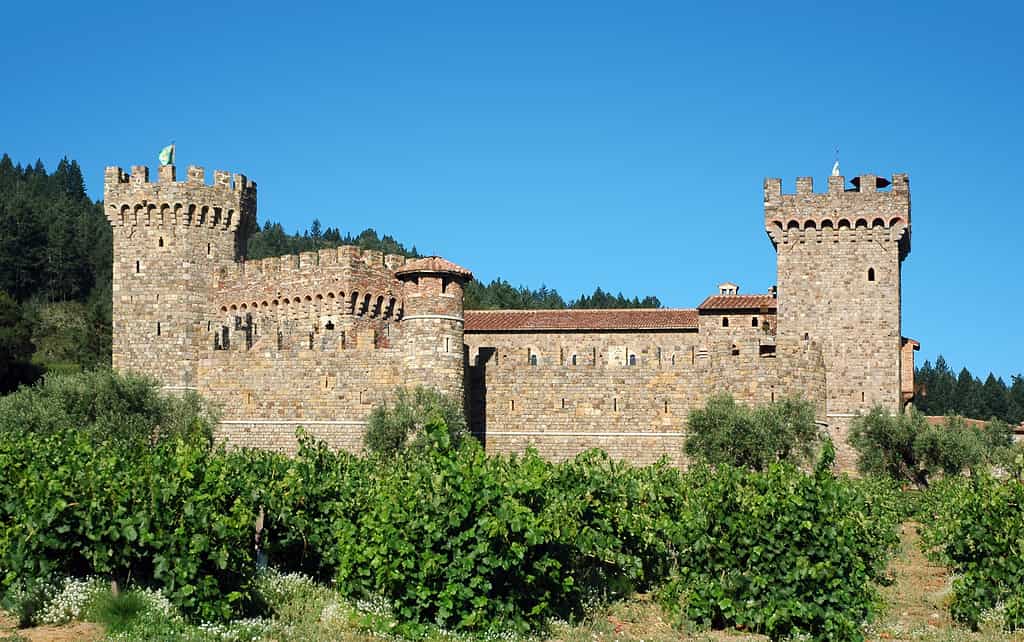
Made from hand-carved stone, this Italian medieval castle attracts tourists to its Napa Valley winery.
©DimiTalen / CC by-sa/3.0/ – License
2. Hearst Castle
The magnificent architectural masterpiece known as Hearst Castle, also known as Hearst San Simeon State Historical Monument, is located near San Simeon, California. Newspaper mogul William Randolph Hearst and architect Julia Morgan oversaw the castle’s construction from 1919 until 1947.
Hearst wanted to build a large hideaway that would showcase his enormous fortune and sophisticated taste, therefore he envisioned the castle as a stately house. The house functioned as a meeting point for Hollywood’s elite, throwing extravagant parties and inviting important visitors.
The architecture of Hearst Castle is a beautiful fusion of architectural forms, namely Spanish Colonial Revival and Mediterranean Revival. The castle’s architecture was influenced by a number of European styles, and it has beautiful grounds, lavish interiors, and a sizable collection of artwork and artifacts from all over the world.
The estate is made up of several different buildings, including the renowned Casa Grande (which would be the primary living area), three guesthouses, and beautiful outdoor areas. Hearst Castle is a tribute to the riches, foresight, and creative sensibility of its designers with its soaring towers, superb workmanship, and spectacular panoramic vistas of the surrounding environment. It is now accessible to the general public, providing a look into the lavish way of life of the past.
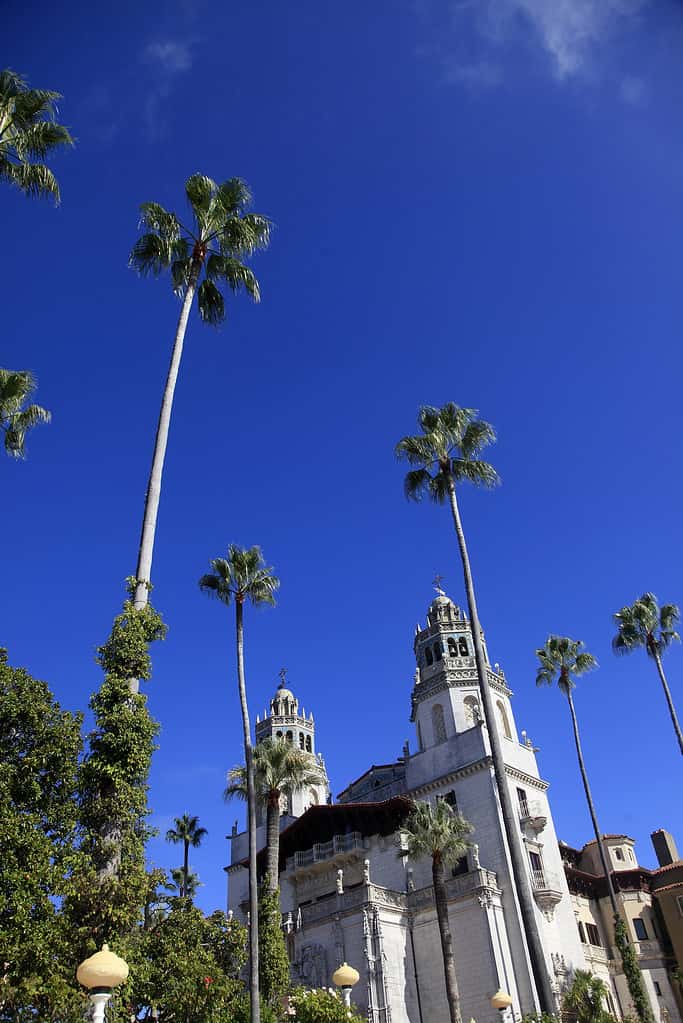
Hearst Castle (pictured) is a fan favorite of locals and visitors to California alike.
©iStock.com/sansara
3. Magic Castle
The Magic Castle is a renowned private club and performance space that has mesmerized crowds for decades. It is situated in the Hollywood district of Los Angeles, California. It was originally the Lane Mansion, constructed in 1908 and first used as a dwelling.
Milt Larsen and his brother Bill converted the home into the Magic Castle in 1963. Their goal was to develop a venue just for magicians to exhibit their talents. The Magic Castle was made to have the feel of a castle in the old-fashioned Victorian manner, replete with turrets, hidden corridors, and a feeling of magic.
One will need a membership or an invitation from a member to enter The Magic Castle, as it is a private club. Only those 21 and older are allowed in, and there is a rigorous dress requirement. The Palace of Mystery, the Close-Up Gallery, and the Parlor of Prestidigitation are just a few of the performance venues available at the Magic Castle. Renowned magicians from all over the world frequently perform within the castle’s performance spaces. The home is renowned for its fun surprises, hidden entrances, and secret tunnels. Unexpected magical occurrences and buried mysteries can be discovered by exploring this fascinating castle.
The Magic Castle’s Gothic Revival and Victorian architectural components combine to create a setting that perfectly reflects the magical world. The mansion’s interior is home to a number of small theaters and a formal dining room, all of which are furnished with antiques and exude mystery. The Magic Castle still offers an exclusive and all-encompassing glimpse into the realm of magic and illusion to members and invited guests today.
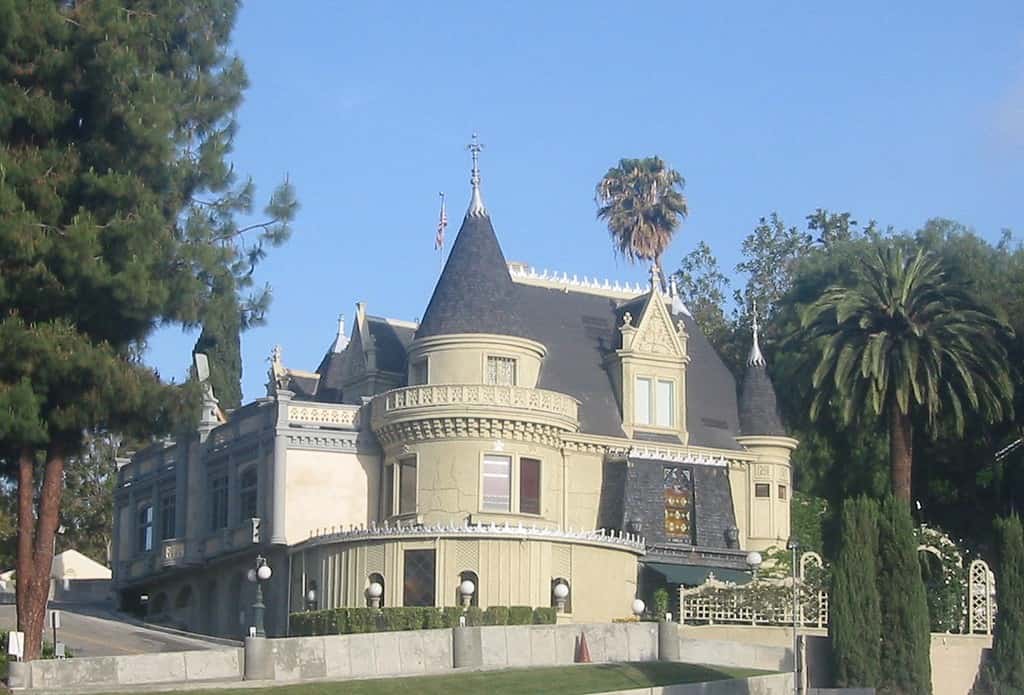
This Victorian-style magician’s club has turrets, hidden corridors, secret corridors, and a feeling of magic
©Minnaert / Public Domain – License
4. Rubel Castle
The unusual and one-of-a-kind Rubel Castle in Glendora, California, has a fascinating past. Michael Rubel, a self-taught artist and inventor, came up with the idea for the castle, which was constructed over several decades beginning in the 1960s.
As a place of refuge for Rubel’s artistic endeavors and a representation of his imaginative vision, Rubel Castle, also known as Rubelia, was built. It was built with reclaimed materials, including scrap metal, pieces of concrete, and even abandoned railroad lines.
Rubel Castle’s architecture is a culmination of several influences, incorporating features of Gothic, Mediterranean, and Moorish styles. Throughout its expansive structure, the castle has turrets, battlements, twisting staircases, and fanciful ornamentation.
Beyond being a work of beauty, Rubel Castle served as a center for social interaction and artistic expression. Visitors are welcome to explore the lavishly designed interiors, which highlight Rubel’s creativity and creative talent.
Rubel Castle is a monument to one man’s creativity and his capacity to turn junk into an alluring piece of art. It is still a beloved monument and a symbol of the strength of imagination in Glendora, California, today.
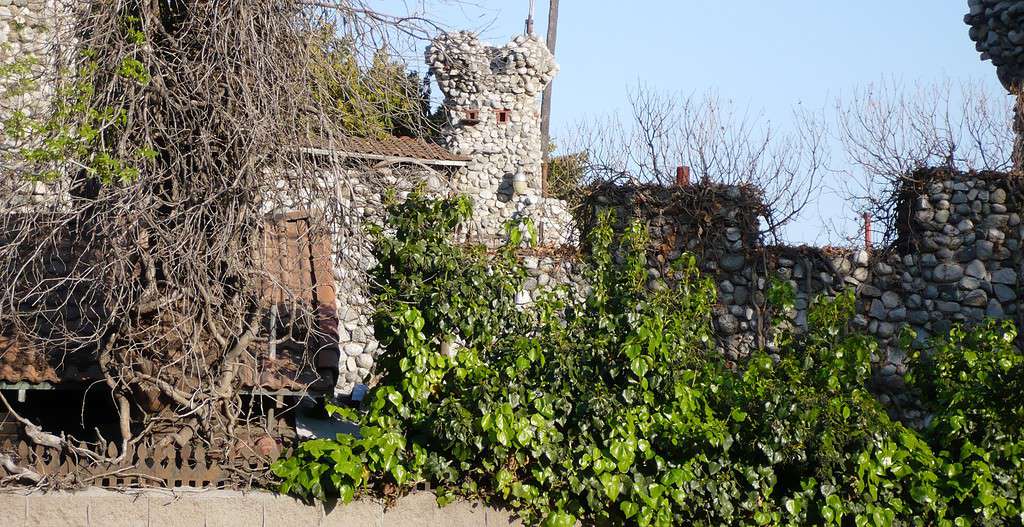
Made of concrete, scrap metal, rocks, bottles, and other repurposed materials, Rubel’s castle is a wonder.
©Polylerus / CC BY-SA 3.0 – License
5. San Francisco Armory
In the Mission District of San Francisco, California stands the San Francisco Armory, also known as the San Francisco Armory Castle. The armory was built in 1914 to provide as a military base for the California National Guard.
The Moorish Revival design had a major influence on the San Francisco Armory’s architectural style. It has a castle-like look thanks to intricate ornamentation, arched windows, and massive towers. The great scale and distinctive architectural features of the structure have established it as a well-known landmark in the area.
The San Francisco Armory has changed over the past few years. It was bought by a private firm and converted into a location for a variety of events, such as musical performances, art exhibits, and theatrical plays. The structure’s unique castle-like beauty and historic appeal make it an intriguing setting for the wide variety of events hosted there.
The San Francisco Armory Castle serves as a symbol of the city’s dynamic culture and a testimony to how well-preserved architectural landmarks may be adapted for use in contemporary settings.
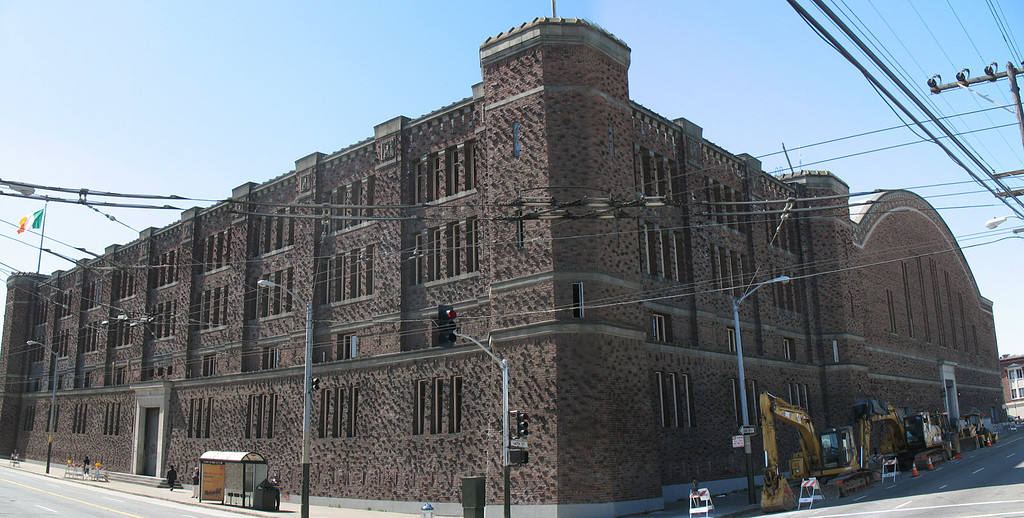
The Moorish Revival design is seen in the intricate ornamentation, arched windows, and massive towers.
©Sanfranman59 / CC BY-SA 3.0 – License
6. Scotty’s Castle
California’s Death Valley National Park is home to Scotty’s Castle, a historic site with a unique history. Scotty’s Castle, despite its name, is a distinctive residence built in the Spanish Colonial Revival style rather than a castle. However, we are including it on our list because it is widely considered a castle-like structure.
The mansion’s construction started in the 1920s and was finished in 1931. Albert Johnson, a billionaire from Chicago, erected it as a holiday residence. The mansion’s name comes from Walter Scott, a colorful guy also known as “Death Valley Scotty,” who asserted to have found a gold mine nearby. Scotty became connected with the property despite having no ownership or participation in the building because of his elaborate stories.
The Moorish and Spanish architectural influences may be seen in Scotty’s Castle’s beautiful tiles, arches, courtyards, and ornate woodwork. The palace is encircled by beautiful gardens, creating a remarkable oasis in the middle of the desert. Today, Scotty’s Castle is accessible for guided tours, giving guests a look at the opulent way of life of the 1920s.
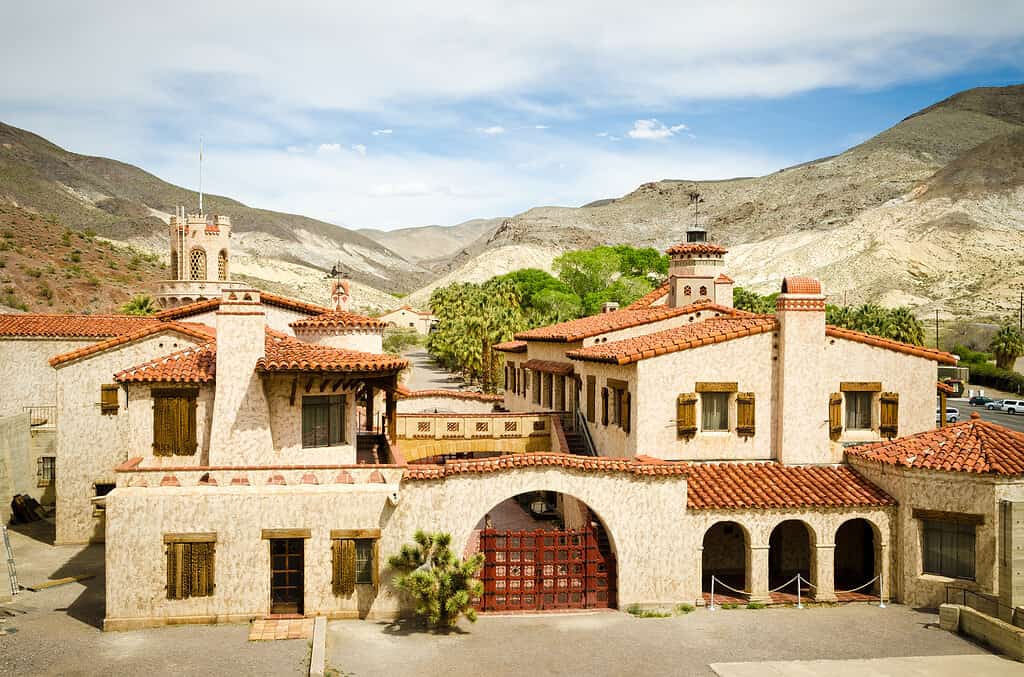
Scotty’s Castle (pictured) is an iconic monument in Death Valley National Park.
©iStock.com/SpVVK
7. Shea’s Castle
The interesting Shea’s Castle, often referred to as Castle Ruins, is located in the Santa Monica Mountains close to Malibu, California. Charles H. Shea, a real estate entrepreneur, erected the castle in the early 1920s with the intention of using it as his own house.
Due to financial obstacles and Charles Shea’s untimely passing, Shea’s Castle was not his residence for long. However, exuding a feeling of mysticism and romance, it went through a series of owners. This 8 bedroom, 7.5-bath castle, constructed of solid granite, is now occupied and known as Sky Castle or Castle Ranch.
Shea’s Castle’s architectural design was influenced by castles in medieval Europe, notably French and Scottish styles. Its stone towers, walls, and archways have a certain quirkiness to them.
Shea’s Castle has grown to be a renowned local icon and a popular hiking and photography location. Visitors are left in awe and curious about the history of this magnificent castle. It stands as a tribute to the hopes and aspirations of its architect.
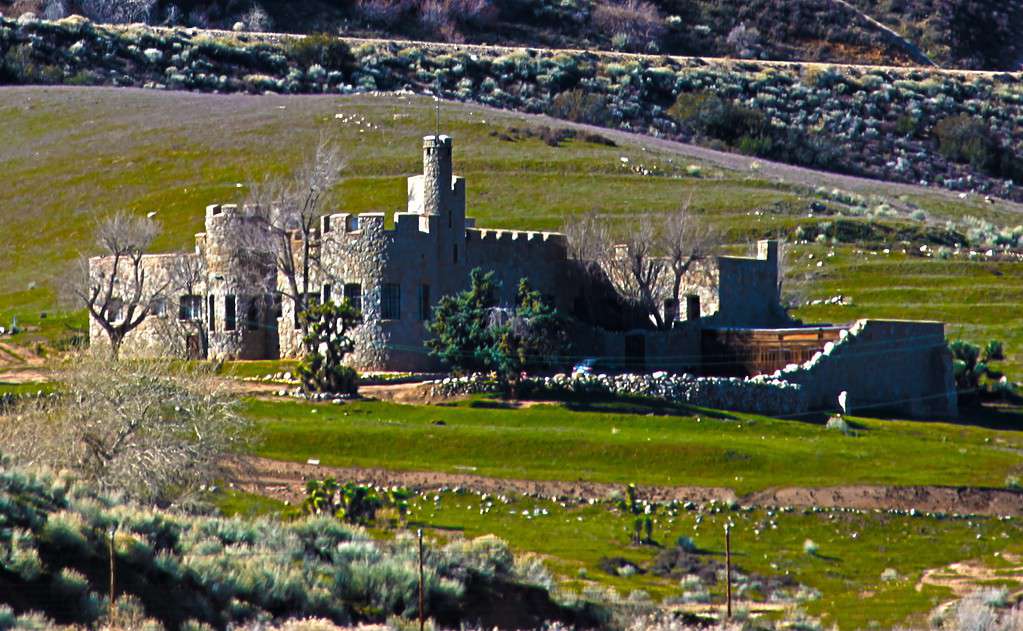
Built with a combination of French and Scottish styles, Shea’s castle has stone towers, walls, and archways.
©Tim King / CC BY 2.0 – License
8. Sleeping Beauty Castle
A well-known representation of enchantment and magic would definitely be the Sleeping Beauty Castle. This magnificent structure can be found in Disneyland Park in Anaheim, California. The castle’s construction started in 1954 and was finished in 1955, the same year that Disneyland first opened its doors.
In order to act as the theme park’s focal point and most recognizable monument, Sleeping Beauty Castle was constructed. The castle was created to immerse guests in a realm of fantasy and imagination, drawing inspiration from fairy tales and Disney’s animated feature “Sleeping Beauty.”
Visitors may enter the castle and start a guided tour that will walk them through Sleeping Beauty’s narrative. The inside is decorated with vivid colors, elaborate decorations, and enchanted settings to mimic a scenario from a fairy tale. Inside the castle, there is a room called the Storybook Gallery. Here, visitors may see a number of hand-painted dioramas portraying significant scenes from the timeless story of Sleeping Beauty. Lighting effects and narration make the dioramas come to life. Beautiful stained glass windows depicting images from Sleeping Beauty decorate the interior of the castle. These exquisite pieces of art demonstrate the skill and consideration that went into their creation. Near the end of the tour, visitors arrive in the Royal Chamber, a magnificent setting where they may see Princess Aurora’s spinning wheel and learn the happy ending to the tale.
The Gothic Revival and fairy tale themes are combined in Sleeping Beauty Castle’s architectural design. Its towering structures, elaborate spires, and fanciful features inspire awe and delight. Beautiful mosaics and complex sculptures cover the façade of the castle, and themed settings and a delightful walkthrough experience can be found within.
The Sleeping Beauty Castle invites guests of all ages to enter a world where dreams come true. It is a true representation of the enchantment and storytelling for which Disney is renowned.
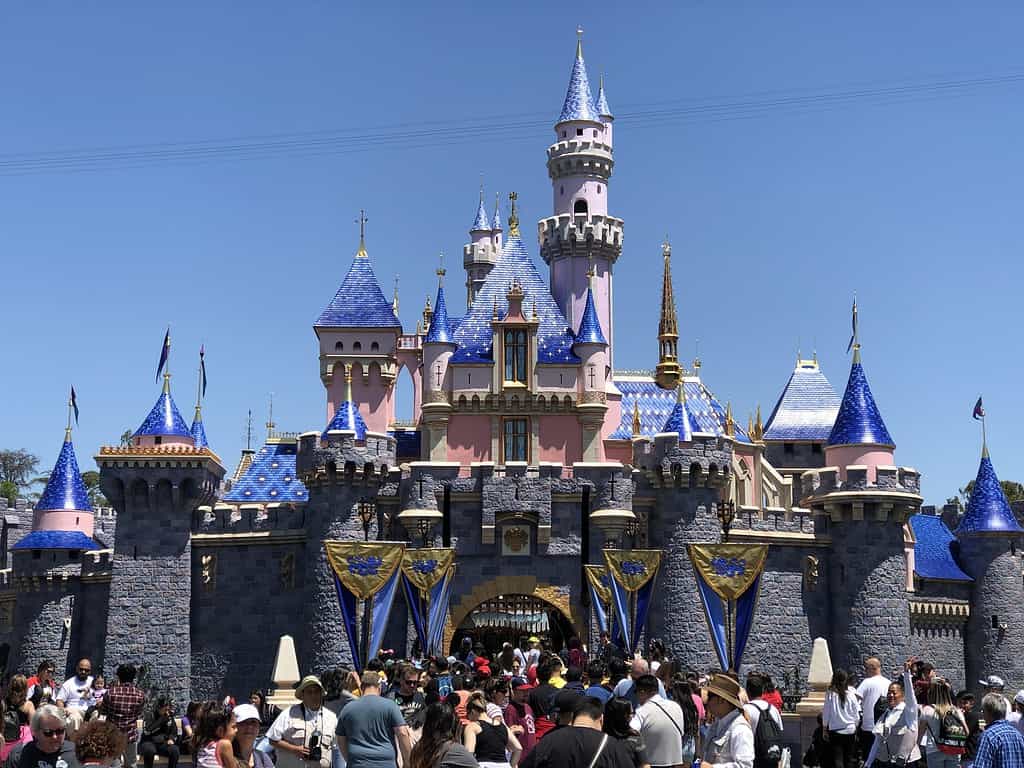
Gothic Revival and fairy tale themes are combined in this castle’s towering structures and elaborate spires.
©CrispyCream27 / CC BY-SA 4.0 – License
9. Vikingsholm
Vikingsholm Castle is a stunning architectural wonder that takes visitors to a Scandinavian-inspired sanctuary. It is located in Emerald Bay State Park on the shores of Lake Tahoe, California. Mrs. Lora Josephine Knight built the castle in 1929 as a vacation home.
Mrs. Knight’s admiration of Scandinavian architecture’s aesthetic grandeur and enduring traditions served as the inspiration for Vikingsholm Castle. Lennart Palme, an architect, used traditional Swedish, Norwegian, and Finnish components to create the castle while attempting to capture the spirit of early Viking constructions.
Utilizing local resources and talented artisans, Vikingsholm Castle was built in just one year. As a consequence, a beautiful combination of rocky stone walls, finely carved woodwork, and steep gabled roofs is produced. The intricate details of the castle, which include elaborate wood carvings and traditional Nordic patterns, demonstrate the care and authenticity put into its creation.
Vikingsholm Castle still survives as evidence of Lake Tahoe’s stunning natural surroundings and distinctive architectural influences. It invites guests to explore its beautiful surroundings and enchanted interiors, providing a window into the regal fascination of Scandinavian design.
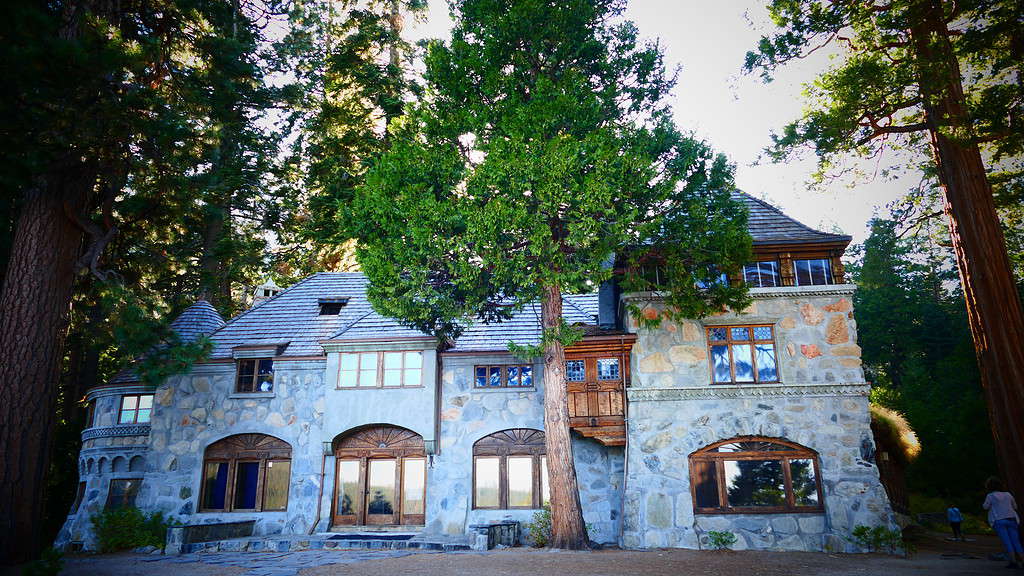
Using local materials and artisans, this Swedish, Norwegian, and Finnish castle created a Viking spirit.
©Laloer / CC BY-SA 4.0 – License
10. Kimberly Crest
The magnificent castle-like estate known as Kimberly Crest is situated near Redlands, California. The structure is a prime example of Gilded Age architecture. Mrs. Cornelia A. Hill hired the renowned architectural firm Oliver and Dennis to create her ideal house. She had the mansion constructed between 1897 and 1905.
The Hill family had Kimberly Crest constructed as a vacation home, and it acted as a display of their affluence and refinement. The Châteauesque architectural style, which is distinguished by its French Renaissance and Gothic Revival components, is the primary architectural influence on the home. The mansion has lofty towers, deft masonry, and a substantial number of decorative accents.
Kimberly Crest is now a museum and event space that is classified as a historic site. The vast interiors, which feature opulent furnishings and ornamental items from the late 19th and early 20th centuries, are open for visitors to explore. With its well-kept grass and colorful flowers, the castle’s lovely gardens make a charming setting for strolls and special celebrations.
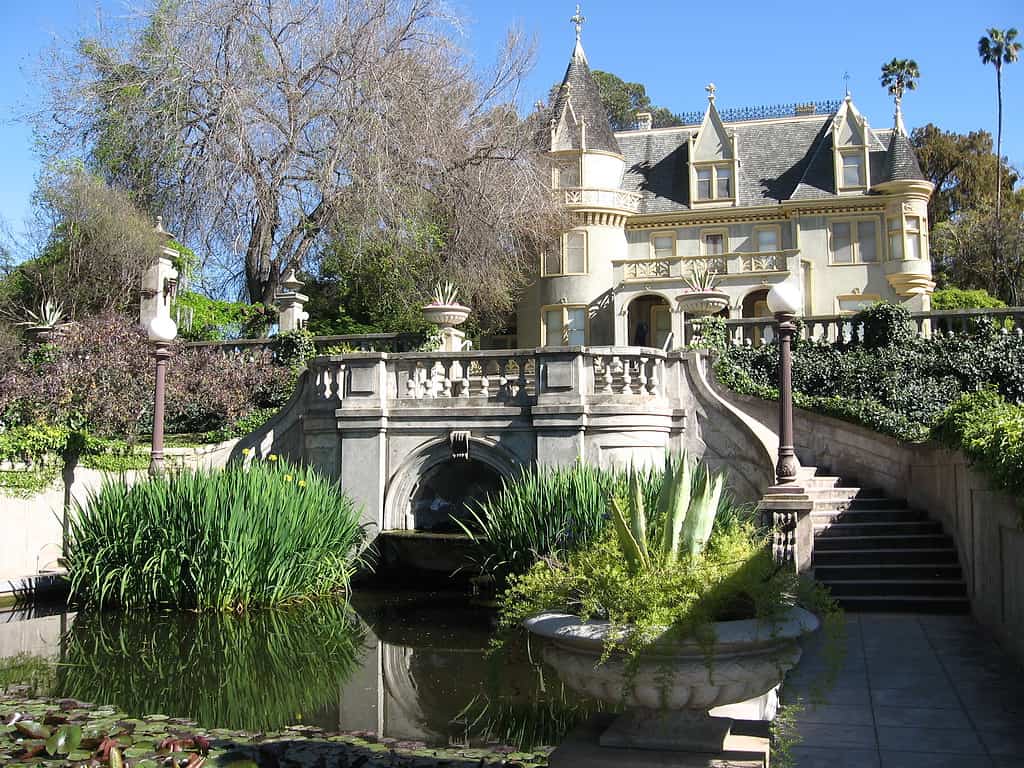
The Châteauesque castle, with French Renaissance and Gothic Revival components, was a vacation home.
©Oleknutlee / Public Domain – License
Summary of 10 Enchanting Castles Found in California
| Castle | Location | Year Completed |
|---|---|---|
| Castello di Amorosa | Calistoga | 2009 |
| Hearst Castle | San Simeon | 1947 |
| Magic Castle | Los Angeles | 1908 |
| Rubel Castle | Glendora | 1988 |
| San Francisco Armory | San Francisco | 1914 |
| Scotty’s Castle | Death Valley | 1931 |
| Shea’s Castle | Antelope Valley near Malibu | 1924 |
| Sleeping Beauty Castle | Disneyland in Anaheim | 1955 |
| Vikingsholm | Lake Tahoe | 1929 |
| Kimberly Crest | Redlands | 1986 |
The photo featured at the top of this post is © FeMiMo/Shutterstock.com
Thank you for reading! Have some feedback for us? Contact the AZ Animals editorial team.






